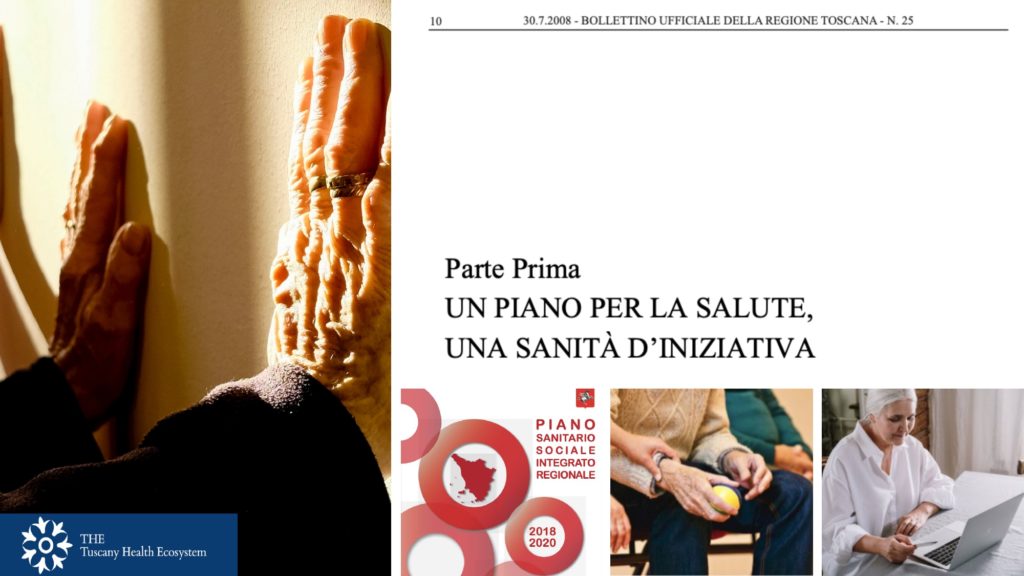D 10.3.1: The regional approach to the cure of chronic diseases: analysis and assessment

A brief overview
The first deliverable research work relies on an inter-disciplinary methodology. The portrayed picture is obviously related to multimorbidity and its challenges, as well as to issues raised by polytherapy. Also, frailty (and vulnerability) is part of the overall framework.
A preliminary observational analysis has been carried out in the last seven months of research and it was devoted precisely to detecting the main patters of the regional (health)care model.
Thus, our investigation has addressed:
- The Tuscany chronic care model, its features, objectives and specificities. In particular, new perspectives concerning a ‘proactive medicine’ approach, along with a strategy based on an integrated assistance and a multiagency professional response were duly investigated;
- The Regional Chronic Care Model as for the aims provided for by The Regional Health Plan 2008-2010. Indeed, the Plan’s goals were highlighted, also taking into account how a new regional paradigm would work in the local context, and its significant impact on the overall regional strategy on healthcare. Despite the context-related claim to chronic diseases, the objectives of the Health Plan affected the broader and wider landscapes of services, assistance quality, (civil) society’s role, altogether with a coordinated effort within the community as a whole;
- The Regional Health Plan 2018-2020 and the shift in focus on the healthcare social perspective. Through an expanded Chronic Care Model, in fact, it promoted an enlarged vision of the regional approach, involving the interaction among several actors, (factors) and patients. Also, the Regional Plan 2018-2020 had aimed at raising awareness on inequalities and an actual, fair and common access to care;
- Building up the project’s targets through frailty measurement scales for screening geriatric patients (i.e. motor skills and cognitive abilities), along with additional family and social context-related variables. A questionnaire to be submitted to the population through the health and social sector support was drafted accordingly;
- Fitness check of the state of the art concerning the current legal tools for ‘protection’, in order to assess their implementation, shortcomings, also in a long-term perspective. The latter has paved the way for further research, encompassing the proposal of a “Legal Tool box” and policies recommendations relying on our research findings.

